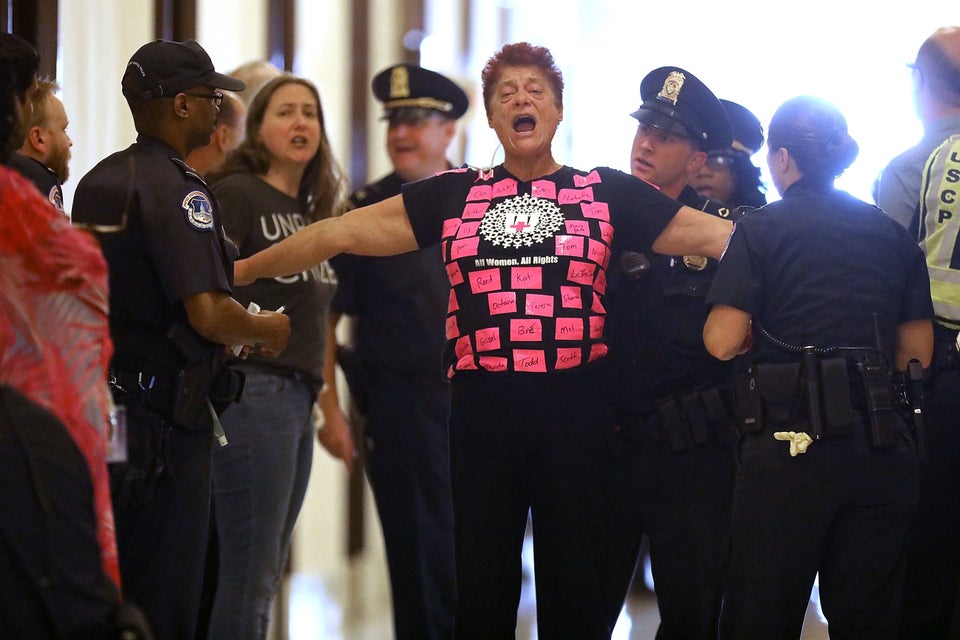Health insurance enrollment on the Affordable Care Act’s exchanges dipped slightly this year, according to preliminary data released by the federal government Wednesday.
In the 39 states where consumers buy coverage via the federally operated HealthCare.gov, 8.5 million people enrolled into private health insurance policies for next year during the open enrollment period that ran from Nov. 1 to Dec. 15, the Centers for Medicare and Medicaid Services announced in a press release. That’s 288,760, or 3 percent, fewer than signed up from those states during enrollment a year ago. The data from last year include some sign-ups that were tabulated during the week after open enrollment ended, while the new figures do not.
Notably, sign-ups for people new to the exchanges fell more significantly compared to the prior enrollment period. Just over 2 million new customers enrolled this year, compared to almost 2.5 million a year ago, an 18 percent decline.
These figures do not include enrollments from the 11 states plus the District of Columbia, which run their own health insurance exchanges. And sign-ups are ongoing in California, Colorado, Massachusetts, Minnesota, New York, Rhode Island and the District of Columbia, which have later final deadlines than the 39 federal exchanges and the state-run exchanges in Connecticut, Idaho, Maryland, Vermont and Washington state.
Earlier data from the federal Centers for Medicare and Medicaid Services seemed to indicate a larger drop-off in enrollments might occur, but a late surge as the Dec. 15 deadline approached made up a significant amount of ground, even though the total failed to match last year’s, which itself was a decline from previous years.
Despite the small decline, these first results demonstrate the perhaps surprising resilience of the health insurance exchanges since the first open enrollment period began in the fall of 2013.
The Obamacare exchanges debuted with a nearly catastrophic failure of HealthCare.gov, and premiums were high and rose each year ― sometimes by a great deal. Many major health insurance companies abandoned these markets after losing money. And the exchanges and the entire Affordable Care Act have been under sustained political assault by the Republican Party at the state and federal level.
“Early evidence from some state-run exchanges, however, suggests that federal actions hampered enrollment.”
Yet millions still continue to come to the exchanges to obtain health insurance. This speaks to the obvious demand for affordable and accessible health coverage. That’s particularly true for people who aren’t offered health benefits by their employers or who couldn’t afford insurance prior to the creation of the Affordable Care Act’s tax credit subsidies for low- and middle-income households or were rejected by insurance companies because of pre-existing conditions before the ACA banned the practice.
Since the beginning, more than 80 percent of exchange customers have been subsidized. This not only gives them access to insurance in the first place, but also shields them from annual premium increases, because the subsidies rise along with the prices. Those who don’t qualify for subsidies, however, must bear the full cost of the insurance and might have been priced out of the market.
President Donald Trump’s administration has taken numerous steps to undermine the program and reduce its effectiveness.
This year, the administration slashed the advertising budget for open enrollment by 90 percent, even though the Centers for Medicare and Medicaid Services possessed evidence that those cuts would lead to fewer sign-ups. The agency also cut the budget for in-person enrollment assistance by 40 percent. These spending reductions followed similar actions taken last year.
Last year, Trump roiled the health insurance markets by halting payments to health insurance companies serving the poorest exchange customers, leading to significant premium increases above what the insurers would otherwise have instituted. Trump and the GOP Congress repealed the fines associated with the ACA’s individual mandate, giving people one less reason to get covered.
The Trump administration also broadened the availability of other forms of health coverage this year that might have drawn away people who otherwise would have enrolled in coverage from an exchange.
Consumers can now purchase so-called short-term, limited duration policies for a a full year. These plans are intended to provide coverage during gaps between other forms of coverage ― like when a new job’s benefits don’t kick in right away ― but the administration and health insurance carriers have promoted them as a substitute for comprehensive health insurance.
These policies, however, are not required to meet federal standards for benefits, and may not cover critical needs such as prescription drugs. Insurers offering these plans also are allowed to reject people with pre-existing conditions, which they aren’t allowed to do for customers shopping for exchange coverage.
The cumulative effect of the Trump administration’s changes to the health insurance market and its management of the exchanges isn’t measurable from the available data, although a report issued after last year’s sign-up campaign indicates they have had a negative effect on enrollment.
Early evidence from some state-run exchanges, however, suggests that federal actions hampered enrollment. The state-administered exchanges did not follow the Trump administration’s lead in cutting outreach and enrollment activities.
Enrollment in Minnesota’s MNSure exchange, for example, was up by about 5,000 people to 113,000 as of Dec. 15, compared to the same date a year ago; sign-ups in that state continue until Jan. 12. Connect for Health Colorado enrolled more than 156,000 people through Dec. 15, about 5 percent more than a year ago, and the sign-up deadline isn’t until Jan. 15. New York State of Health also is enrolling more people than in 2017, with more than 247,000 sign-ups through Dec. 15, up from 229,000 on that date last year; the final deadline in New York is Jan. 31. The enrollment period on Maryland Health Connection ended Dec. 15 with nearly 157,000 sign-ups, a slight increase from the previous year.
Washington Healthplanfinder, however, saw a slight dip in enrollment to almost 223,000, down from almost 243,000, when its enrollment period ended Dec. 15.

